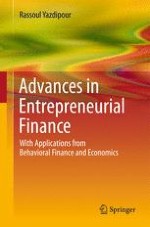2011 | OriginalPaper | Buchkapitel
5. Contribution of Neuroscience to Financial Decision-Making
verfasst von : Richard W. Ackley, Lukasz M. Konopka
Erschienen in: Advances in Entrepreneurial Finance
Verlag: Springer New York
Aktivieren Sie unsere intelligente Suche, um passende Fachinhalte oder Patente zu finden.
Wählen Sie Textabschnitte aus um mit Künstlicher Intelligenz passenden Patente zu finden. powered by
Markieren Sie Textabschnitte, um KI-gestützt weitere passende Inhalte zu finden. powered by
